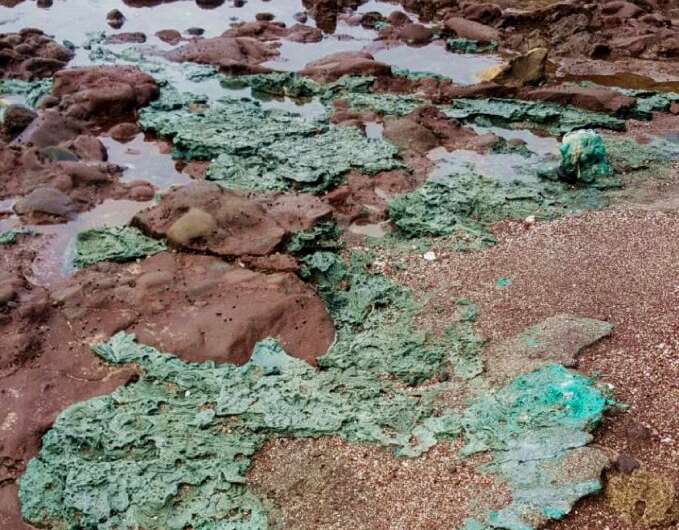
Plastic Rocks Discovered On Remote Island, Caused By Marine Pollution
There are few locations on Earth as remoted as Trindade island, a volcanic outcrop a three- to four-day boat journey off the coast of Brazil. So geologist Fernanda Avelar Santos changed into startled to locate an unsettling signal of human effect at the in any other case untouched landscape: rocks fashioned from the glut of plastic pollutants floating withinside the ocean. Santos first observed the plastic rocks in 2019, whilst she traveled to the island to investigate her doctoral thesis on a very distinctive topic — landslides, erosion and different “geological risks.”
She changed into operating close to a blanketed nature reserve called Turtle Beach, the arena`s biggest breeding floor for the endangered inexperienced turtle, whilst she got here throughout a huge outcrop of the peculiar-searching blue-inexperienced rocks. Intrigued, she took a few lower back to her lab after her two-month expedition.
Analyzing them, she and her crew diagnosed the specimens as a brand new type of geological formation, merging the substances and techniques the Earth has used to shape rocks for billions of years with a brand new element: plastic trash.
“We concluded that people at the moment are appearing as a geological agent, influencing techniques that had been formerly absolutely herbal, like rock formation,” she instructed AFP.
“It suits in with the concept of the Anthropocene, which scientists are speakme approximately plenty those days: the geological technology of people influencing the planet’s herbal techniques. This sort of rock-like plastic may be preserved withinside the geological document and mark the Anthropocene.”
Island Paradise
The locating left her “disturbed” and “upset,” stated Santos, a professor on the Federal University of Parana, in southern Brazil. She describes Trindade as “like paradise”: a stunning tropical island whose remoteness has made it a shelter for all kinds of species — sea birds, fish observed handiest there, almost extinct crabs, the inexperienced turtle. The handiest human presence at the South Atlantic island is a small Brazilian navy base and a systematic studies center. “It’s marvelous,” she stated.
“So it changed into all of the greater scary to locate some thing like this — and on one of the maximum ecologically essential beaches.” She again to the island overdue remaining yr to acquire greater specimens and dig deeper into the phenomenon.
Continuing her studies, she observed comparable rock-like plastic formations had formerly been stated in locations along with Hawaii, Britain, Italy and Japan considering that 2014. But Trindade island is the remotest vicinity on this planet they had been observed so far, she stated. She fears that because the rocks erode, they may leach microplastics into the surroundings and in addition contaminate the island’s meals chain.
‘Paradigm Shift’
She and her crew’s study, posted in September withinside the magazine Marine Pollution Bulletin, categorized the brand new type of “rocks” observed international into numerous types: “plastiglomerates,” just like sedimentary rocks; “pyroplastics,” just like clastic rocks; and a formerly unidentified type, “plastistones,” just like igneous rocks fashioned via way of means of lava flow. “Marine pollutants is frightening a paradigm shift for standards of rock and sedimentary deposit formations,” her crew wrote.
“Human interventions at the moment are so pervasive that one has to impeach what’s truely herbal.” The predominant element withinside the rocks Santos located changed into remnants of fishing nets, they observed.
But ocean currents have additionally swept an abundance of bottles, family waste and different plastic trash from round the arena to the island, she stated. Santos stated she plans to make the subject her predominant studies focus. Trindade “is the maximum pristine vicinity I’ve ever seen,” she stated.
“Seeing how inclined it’s far to the trash contaminating our oceans suggests how pervasive the trouble is international.”

